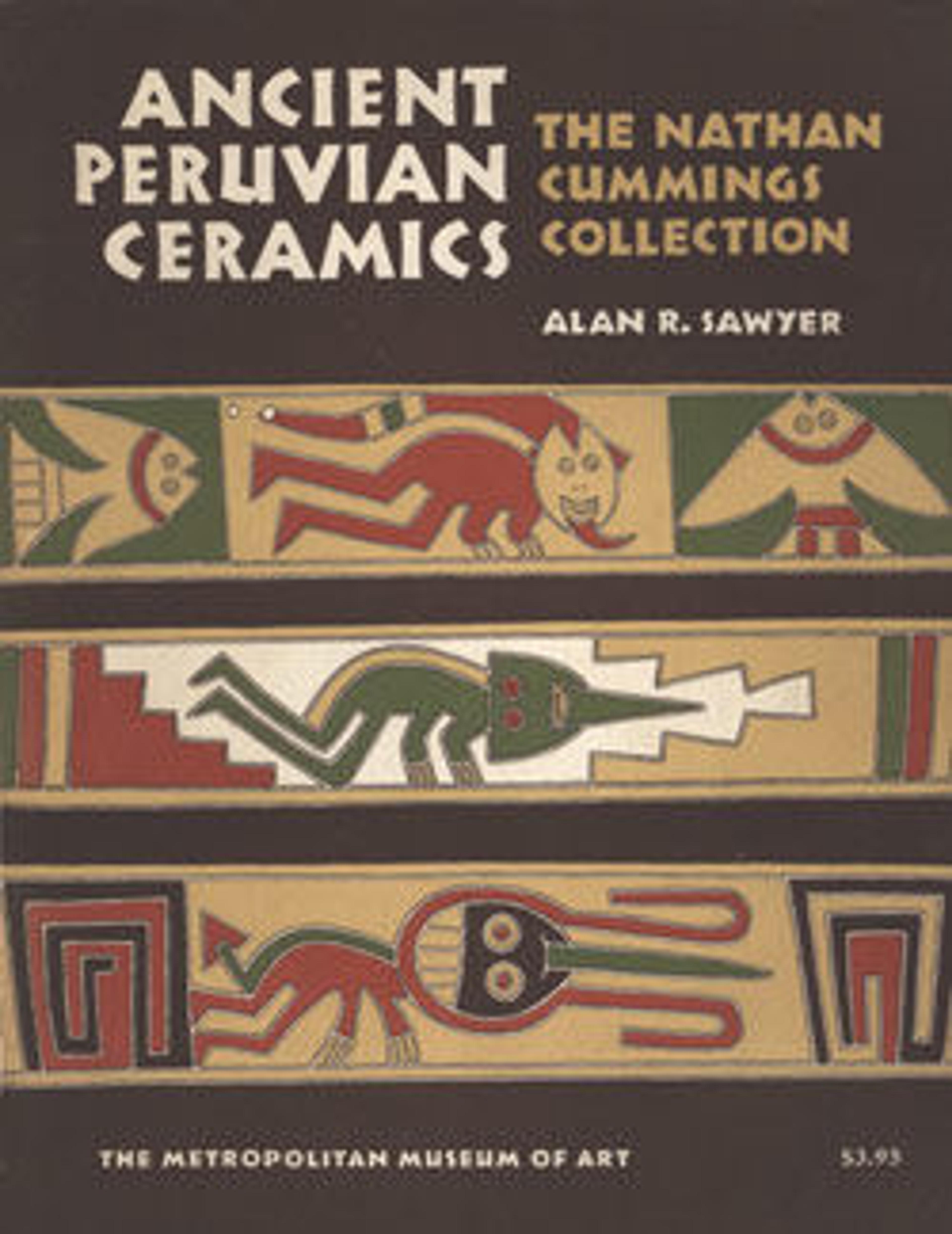Figure Bottle
This Moche stirrup spout bottle represents a man wearing a sleeved tunic with vertical bands and carrying funerary items. He is holding a rolled mat in his right hand and a dipper in his left hand. Similar Moche vessels represent mutilated individuals, skeletal beings, and anthropomorphized bats performing the same action. The preparation of the bodies, their shrouds, encasings, and funerary offerings was an elaborate process in Moche society. The body was first wrapped in one or many layers of textiles, then encased in a cane structure, or in a fiber mat, as the one illustrated here. Small copper or stone objects were often placed in the hands and mouth of the deceased. Fine ceramic vessels are the most ubiquitous offerings in Moche burials. The deceased were also frequently buried with personal adornments, gourds filled with food, metal objects, and everyday implements such as spindles, whorls, and needles. The quantity and quality of funerary offerings, as well as the time invested in preparing and encasing the body, depended on the social status of the deceased.
Artwork Details
- Title: Figure Bottle
- Date: 3rd–5th century
- Geography: Peru
- Culture: Moche
- Medium: Ceramic, slip, pigment
- Dimensions: H. 7 1/2 × W. 5 3/4 in. (19.1 × 14.6 cm)
- Classification: Ceramics-Containers
- Credit Line: Gift of Mr. and Mrs. Nathan Cummings, 1964
- Object Number: 64.228.43
- Curatorial Department: The Michael C. Rockefeller Wing
More Artwork
Research Resources
The Met provides unparalleled resources for research and welcomes an international community of students and scholars. The Met's Open Access API is where creators and researchers can connect to the The Met collection. Open Access data and public domain images are available for unrestricted commercial and noncommercial use without permission or fee.
To request images under copyright and other restrictions, please use this Image Request form.
Feedback
We continue to research and examine historical and cultural context for objects in The Met collection. If you have comments or questions about this object record, please contact us using the form below. The Museum looks forward to receiving your comments.
